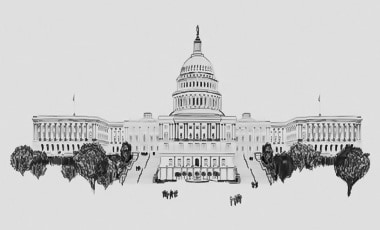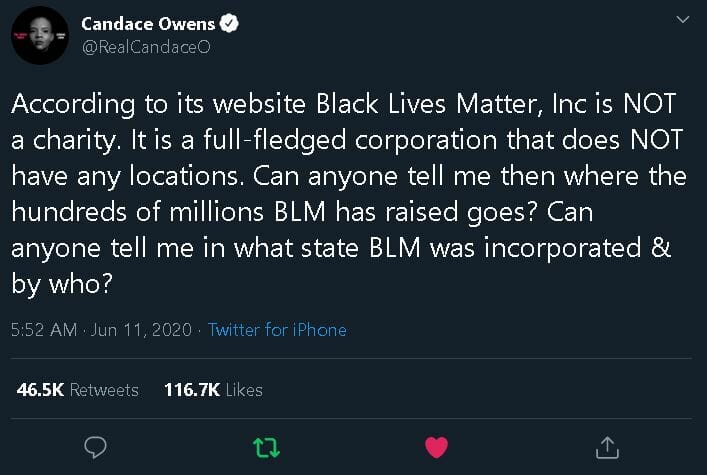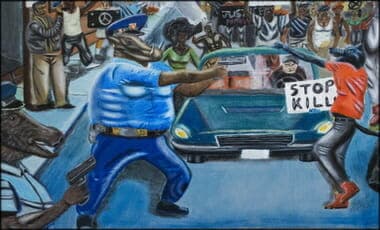Amala Ekpunobi grew up believing that policing in America was systemically racist. An outspoken activist, she marched for Black Lives Matter and advocated to defund the police. A chance encounter with a kind police officer made Amala begin to question her assumptions. Eager to validate her long-held beliefs, she investigated the facts behind the “racist police” narrative. The deeper she dug, the more her doubt grew, ultimately leading to a confrontation with the truth that transformed her entire worldview.
Police


Officers Salute Fallen Compatriot (Thin Blue Line)
God bless the thin blue line. Godspeed!
Back the Blue pic.twitter.com/2L6DiBvZQ0
— Mark Meadows (@MarkMeadows) January 29, 2022
This is the actions that make both people and officers unsafe via George Soros backed District Attorneys — RED STATE: “Widow of Slain NYPD Officer Delivers Moving Tribute, Slams DA: ‘We Are Not Safe'”
“The system continues to fail us,” Officer Rivera’s widow says in powerful eulogy. “I know you were tired of the laws, especially the ones from the new DA. I hope he’s watching you speak through me right now.” pic.twitter.com/wH4RdlUxTv
— Spencer Brown (@itsSpencerBrown) January 28, 2022
….“Although you won’t be here anymore, I want you to live through me,” she said. “This system continues to fail us. We are not safe anymore, not even the members of the service. I know you were tired of these laws, especially the ones from the new DA. I hope he’s watching you speak through me right now. I’m sure all of our blue family is tired too. But I promise, we promise, that your death won’t be in vain.”
Luzuriaga was referencing D.A. Alvin Bragg’s letter saying he would not prosecute certain crimes and wouldn’t push for jail or bail, in some cases, at a time when violent crime is on the rise with an increase in murders.
“I love you until the end of time. We’ll take the watch from here,” she finished…..

Larry Elder Covers The Capitol Incident
This is from yesterdays show (1/7/2021), and is a large sample of why The Sage is great at what he does. I add some video which radio only allows audio to play, as well as adding some of the video from @The Larry Elder Show — HERE: Enjoy, it is a stitching of large sections from all three hours.
Last segment of the above is a great shorter listen. This is the last portion of a larger audio, HERE. Larry Elder discusses new studies – but included one from the 1970s… this is the first time I have heard this particular study

Black Lives Matter (Exposed): Joel Patrick | Hodge Twins
Following the money donated to Black Lives Matter, via Joel Patrick
[fbvideo link=”https://www.facebook.com/watch/?v=567696250827248″ width=”691″ height=”400″ onlyvideo=”0″]Candace Owens has brought new vigor to the above:

White Lives Matter & Black Lives Matter Exposed, via the Hodge Twins

Crowder Takes John Oliver’s Police Video To The Tool Shed
Steven addresses John Oliver’s latest anti-police tirade, demonstrating the #BlackLivesMatter narrative simply doesn’t line up with the facts.

The MSM Will Not Tell the Truth About Black Lives Matter
What the media won’t acknowledge: Black Lives Matter fuels violent anti-police sentiment. WATCH Sheriff David Clarke with the facts (and Don Lemon with the stammering and cut to commercial). (The original video following Sheriff Clarke and Don Lemon was uploaded at PRAGER U on Apr 16, 2018):
My old video making the short point:
Video Description
This group is a racist, political cult. Many of it’s people are into the Nation of Islam’s teachings, wrapped up in the Black Panthers [new or old] bow. Their leaders have said that if you are white, just being white makes you racist. The leader of BLM have taken trips to support the Palestinian’s in their anti-Semitism, anti-gay freedoms, etc.
BLM activists and leaders consistently call for a race war, the killing of police officers, and the like, all geared towards white people. And yet Barack Obama, Hillary Clinton, and Bernie Sanders… as well as many Democrat Senators and Representatives and left-leaning groups continue to support and defend them.
Even the BLM radio show has called for a race war and an “open season” on white officers.
One of the best conversations on this topic can be found at the RUBIN REPORT

Will People Want To Serve as Police Officers? (Tucker Carlson)
How long before no one in America will serve as a police officer?

10 Reasons Why Blacks Should Leave the Democratic Party
Does the Democratic Party represent the interests of black Americans? Larry Elder gives 10 reasons why blacks might consider leaving the Democratic Party.
10. School Choice
9. Social Security
8. Race-Based Preferences for Diversity
7. War on Poverty (Welfare State)
6. Illegal Immigration
5. Hostility Towards Police
4. Job Killing Regulations
3. The Great Recession (Housing Crisis)
2. Playing the Race Card for Votes
1. Pro-Abortion

Are Police “Racists”? (Larry Elder)
After a caller leaves a message mentioning the 72-police officers being put on leave for “racist” comments on their social media sites, Larry Elder brings some rational stats into the conversation. Let me also say, all I have read so far is that these offices said some racist, Islamophobic, and disparaging comments. I bet a good amount of these comments were stuff the PC-Police “think” are these things, but are are not. See Larry’s article entitled, “Criminal Behavior, Not Racism, Explains ‘Racial Disparities’ in Crime Stats“. See more on SIXHIRB at my post here: “Deck O’ Race Cards (PJTV), and Dennis Prager“.

Ronil Singh (Patriot, American)
SUPPORT our first responders…. I have ways to do this on my FIRST RESPONDERS page. (If you know of a site you think would go well on this page, let me know: rpt@r-pt.net)
Former NYPD officer Dan Bongino appeared on Fox News weekend to contrast the politicization of U.S. immigration policies after police officer Ronil Singh was fatally shot in California by an illegal immigrant fugitive. (More at CONSERVATIVE TREEHOUSE)
Here is Ronil’s brother:
Slain Calif. police officer Ronil Singh’s little brother breaks down in tears as he thanks law enforcement for working day and night to catch his brother’s killer
Singh also leaves behind a wife and 5-month-old son
Absolutely devastating to watch this.pic.twitter.com/xvS1s2JDpF
— Jason Howerton (@jason_howerton) December 29, 2018
An ANGEL MOM speaks out:

Inclusion of Women in Front-Line Combat
This is with a hat-tip to CHICKS ON THE RIGHT via DAILY MAIL:
US Army drops grenade throwing as a requirement to graduate because new recruits can’t throw far enough (but do they mean women?)
- US Army will no longer require recruits to show adequate hand grenade skills
- Change is being made because many enlistees ‘can’t throw it far enough’
- Recruits also won’t be required to pass land navigation course to graduate
- Army’s redesign of Basic Combat Training is aimed at instilling more discipline
- Army would not comment on whether the specific requirements are particularly a problem for women
- Many on Twitter used the development to attack influx of female enlistees
[…..]
The new policy was reported by Military.com.
‘What we have found is it is taking far, far too much time,’ said Maj. Gen. Malcolm Frost, the commanding general of the US Army Center of Initial Military Training.
‘It’s taking three to four times as much time … just to qualify folks on the hand grenade course than we had designated so what is happening is it is taking away from other aspects of training.’
‘We are finding that there are a large number of trainees that come in that quite frankly just physically don’t have the capacity to throw a hand grenade 20 to 25 to 30 meters,’ he said.
The above was originally uploaded by myself to my MRCTV account on April 26th, 2012. I wrote a post on it on my blog with the same date. I am uploading the audio to my YouTube for easier embedding. Here is the description from the original post being updated today:
Dennis discusses the purpose of the Marines, to win. For the same reason a professional baseball team does not have women on its team is because they cannot perform as well as a man in most situations similar to the analogy of baseball and combat. If so, why not make full fledged women brigades for the front lines? Also, a woman caller who served in the Air Force mentions her not qualifying for the K-9 unit because she could not carry 70lbs. She agreed with that policy… that is, if a women cannot physically meet the demands, then, they should not be allowed into such a position.
Another caller that was in the ARMY when they integrated training points out some of the below in rough terms:
It was July 1959. With about 60 other recruits, I was being welcomed to basic training at Fort Jackson, S.C. According to John Leo’s “A Kinder, Gentler Army” (in U.S. News & World Report on Aug. 8, 1997), such a welcome is now out. Today’s Army manual dictates, “Stress created by physical or verbal abuse is nonproductive and prohibited.” Forget whether traditional adversative training produced a first-class military throughout our history.Why the changes? Partly, it’s because today’s youth are unaccustomed to discipline and authority, but mainly it’s because our lovelies want to be fighting persons. To accommodate them means the military must lower standards. Carrying a stretcher used to be a two-man job, now it’s a four-person job. The Navy finds that few of its females can manage shipboard emergency tasks such as hefting fire hoses or carrying wounded personnel up a ladder on a stretcher. Females pass physical training because of gender-norming. Yellow lines are put on climbing ropes. Male trainees have to climb to the top, but for our lovelies the yellow line will do. As for those awful push-ups, men have to do 20 and women just six. Then there’s the “confidence course,” called the obstacle course in the pre-P.C. days. At Quantico’s Marine training facility, a visitor noticed a footstool placed in front of an 8-foot wall so no trainee would fail to climb over it. There’s one male/female strength difference quite worrisome. At Parris Island, it was discovered that 45 percent of female Marines were unable to throw a hand grenade far enough to avoid blowing themselves up. Translated in Williams’ terms: If I were in a foxhole with a woman about to toss a hand grenade, I’d consider her the enemy. Walter Williams book, “More Liberty Means Less Government,” [see: http://tinyurl.com/zdxxkk4], also his article: “Double standards in military could be scary in actual combat”
MORE
Similarly, when it comes to first responders, we want the best person to protect civilians in the best possible manner. Suzanne Venker and Phyllis Schlafly in their book, The Flipside of Feminism: What Conservative Women Know — and Men Can’t Say, note the following:
If there is indeed a social revolution under way, it shouldn’t stop with women’s choice to honor their [own] nature. It must also include a newfound respect for men. It was New York City’s firemen who dared to charge up the stairs of the burning Twin Towers on September 11, 2001. The death tally of New York City’s firefighters was: men 343, women 0. Can anyone honestly say you would have wanted a woman coming to your rescue on that fateful day?
(Washington, D.C.: WND Books, 2011), 181-182.
To further make the point, here is David Mamet — of Glengarry Glen Ross fame — noting the above in a very erudite manner:
There is a Liberal sentiment that it should also punish those who take more than their “fair share.” But what is their fair share? (Shakespeare suggests that each should be treated not according to his deserts, but according to God’s mercy, or none of us would escape whipping.)
The concept of Fairness, for all its attractiveness to sentiment, is a dangerous one (cf. quota hiring and enrollment, and talk of “reparations”). Deviations from the Law, which is to say the Constitution, to accommodate specifically alleged identity-group injustices will all inevitably be expanded, universalized, and exploited until there remains no law, but only constant petition of Government.
We cannot live in peace without Law. And though law cannot be perfect, it may be just if it is written in ignorance of the identity of the claimants and applied equally to all. Then it is a possession not only of the claimants but of the society, which may now base its actions upon a reasonable assumption of the law’s treatment.
But “fairness” is not only a nonlegal but an antilegal process, for it deals not with universally applicable principles and strictures, but with specific cases, responding to the perceived or proclaimed needs of individual claimants, and their desire for extralegal preference. And it could be said to substitute fairness (a determination which must always be subjective) for justice (the application of the legislated will of the electorate), is to enshrine greed—the greed, in this case, not for wealth, but for preference. The socialistic spirit of the Left indicts ambition and the pursuit of wealth as Greed, and appeals, supposedly on behalf of “the people,” to the State for “fairness.”….
….But such fairness can only be the non-Constitutional intervention of the State in the legal, Constitutional process—awarding, as it sees fit, money (reparations), preferment (affirmative action), or entertainment (confiscation)….
….”Don’t you care?” is the admonition implicit in the very visage of the Liberals of my acquaintance on their understanding that I have embraced Conservatism. But the Talmud understood of old that good intentions can lead to evil—vide Busing, Urban Renewal, Affirmative Action, Welfare, et cetera, to name the more immediately apparent, and not to mention the, literally, tens of thousands of Federal and State statutes limiting freedom of trade, which is to say, of the right of the individual to make a living, and, so earn that wealth which would, in its necessary expenditure, allow him to provide a living to others….
…. I recognized that though, as a lifelong Liberal, I endorsed and paid lip service to “social justice,” which is to say, to equality of result, I actually based the important decisions of my life—those in which I was personally going to be affected by the outcome—upon the principle of equality of opportunity; and, further, that so did everyone I knew. Many, I saw, were prepared to pay more taxes, as a form of Charity, which is to say, to hand off to the Government the choice of programs and recipients of their hard-earned money, but no one was prepared to be on the short end of the failed Government programs, however well-intentioned. (For example—one might endorse a program giving to minorities preference in award of government contracts; but, as a business owner, one would fight to get the best possible job under the best possible terms regardless of such a program, and would, in fact, work by all legal and, perhaps by semi- or illegal means to subvert any program that enforced upon the proprietor a bad business decision.)*
Further, one, in paying the government to relieve him of a feeling of social responsibility, might not be bothered to question what in fact constituted a minority, and whether, in fact, such minority contracts were actually benefiting the minority so enshrined, or were being subverted to shell corporations and straw men.†
* No one would say of a firefighter, hired under rules reducing the height requirement, and thus unable to carry one’s child to safety, “Nonetheless, I am glad I voted for that ‘more fair’ law.”
† As, indeed, they are, or, in the best case, to those among the applicants claiming eligibility most capable of framing, supporting, or bribing their claims to the front of the line. All claims cannot be met. The politicians and bureaucrats discriminating between claims will necessarily favor those redounding to their individual or party benefit—so the eternal problem of “Fairness,” supposedly solved by Government distribution of funds, becomes, yet again and inevitably, a question of graft.
David Mamet, The Secret Knowledge: On the Dismantling of American Culture (New York, NY: Sentinel Publishing, 2011), 116-117, 122, 151, 154.
What this boils down to is people wanting to feel good about themselves…. but like Mamet noted, would rather not “feel good” about themselves if their own family member is involved.

Everyone Should Stand for the National Anthem (Joy Villa)
Why should every American stand for the National Anthem? Because the Anthem and the flag represent America, and America is a free nation. That alone is worth standing for. Joy Villa, singer, songwriter, and recording artist, explains.
Historian Paul Johnson Opines:
[p. 3>] The creation of the United States of America is the greatest of all human adventures. No other national story holds such tremendous lessons, for the American people themselves and for the rest of mankind. It now spans four centuries and, as we enter the new millennium, we need to retell it, for if we can learn these lessons and build upon them, the whole of humanity will benefit in the new age which is now opening. American history raises three fundamental questions. First, can a nation rise above the injustices of its origins and, by its moral purpose and performance, atone for them? All nations are born in war, conquest, and crime, usually concealed by the obscurity of a distant past. The United States, from its earliest colonial times, won its title—deeds in the full blaze of recorded history, and the stains on them are there for all to see and censure: the dispossession of an indigenous people, and the securing of self—sufficiency through the sweat and pain of an enslaved race. In the judgmental scales of history, such grievous wrongs must be balanced by the erection of a society dedicated to justice and fairness. Has the United States done this? Has it expiated its organic sins? The second question provides the key to the first. In the process of nation—building, can ideals and altruism—the desire to build the perfect community—be mixed successfully with acquisitiveness and ambition, without which no dynamic society can be built at all? Have the Americans got the mixture right? Have they forged a nation where righteousness has the edge over the needful self—interest? Thirdly, the Americans originally aimed to build another—worldly `City on a Hill,’ but found themselves designing a republic of the people, to be a model for the entire planet. Have they made good their audacious claims? Have they indeed proved exemplars for humanity? And will they continue to be so in the new millennium?
We must never forget that the settlement of what is now the United States was only part of a larger enterprise. And this was the work of the best and the brightest of the entire European continent. They were greedy. As Christopher Columbus said, men crossed the Atlantic primarily in search of gold. But they were also idealists. These adventurous young men thought they could transform the world for the better. Europe was too small for them—for their energies, their ambitions, and [p. 4>] their visions. In the 11th, 12th, and 13th centuries, they had gone east, seeking to reChristianize the Holy Land and its surroundings, and also to acquire land there. The mixture of religious zeal, personal ambition—not to say cupidity—and lust for adventure which inspired generations of Crusaders was the prototype for the enterprise of the Americas.
In the east, however, Christian expansion was blocked by the stiffening resistance of the Moslem world, and eventually by the expansive militarism of the Ottoman Turks. Frustrated there, Christian youth spent its ambitious energies at home: in France, in the extermination of heresy, and the acquisition of confiscated property; in the Iberian Peninsula, in the reconquest of territory held by Islam since the 8th century, a process finally completed in the 1490s with the destruction of the Moslem kingdom of Granada, and the expulsion, or forcible conversion, of the last Moors in Spain. It is no coincidence that this decade, which marked the homogenization of western Europe as a Christian entity and unity, also saw the first successful efforts to carry Europe, and Christianity, into the western hemisphere. As one task ended, another was undertaken in earnest.
The Portuguese, a predominantly seagoing people, were the first to begin the new enterprise, early in the 15th century. In 1415, the year the English King Henry V destroyed the French army at Agincourt, Portuguese adventurers took Ceuta, on the north African coast, and turned it into a trading depot. Then they pushed southwest into the Atlantic, occupying in turn Madeira, Cape Verde, and the Azores, turning all of them into colonies of the Portuguese crown. The Portuguese adventurers were excited by these discoveries: they felt, already, that they were bringing into existence a new world, though the phrase itself did not pass into common currency until 1494. These early settlers believed they were beginning civilization afresh: the first boy and girl born on Madeira were christened Adam and Eve. But almost immediately came the Fall, which in time was to envelop the entire Atlantic. In Europe itself, the slave—system of antiquity had been virtually extinguished by the rise of Christian society. In the 1440s, exploring the African coast from their newly acquired islands, the Portuguese rediscovered slavery as a working commercial institution. Slavery had always existed in Africa, where it was operated extensively by local rulers, often with the assistance of Arab traders. Slaves were captives, outsiders, people who had lost tribal status; once enslaved, they became exchangeable commodities, indeed an important form of currency.
[p. 5>] The Portuguese entered the slave—trade in the mid—15th century, took it over and, in the process, transformed it into something more impersonal, and horrible, than it had been either in antiquity or medieval Africa. The new Portuguese colony of Madeira became the center of a sugar industry, which soon made itself the largest supplier for western Europe. The first sugar— mill, worked by slaves, was erected in Madeira in 1452. This cash—industry was so successful that the Portuguese soon began laying out fields for sugar—cane on the Biafran Islands, off the African coast. An island off Cap Blanco in Mauretania became a slave—depot. From there, when the trade was in its infancy, several hundred slaves a year were shipped to Lisbon. As the sugar industry expanded, slaves began to be numbered in thousands: by 1550, some 50,000 African slaves had been imported into Sao Tome alone, which likewise became a slave entrepot. These profitable activities were conducted, under the aegis of the Portuguese crown, by a mixed collection of Christians from all over Europe—Spanish, Normans, and Flemish, as well as Portuguese, and Italians from the Aegean and the Levant. Being energetic, single young males, they mated with whatever women they could find, and sometimes married them. Their mixed progeny, mulattos, proved less susceptible than pure—bred Europeans to yellow fever and malaria, and so flourished. Neither Europeans nor mulattos could live on the African coast itself. But they multiplied in the Cape Verde Islands, 300 miles off the West African coast. The mulatto trading—class in Cape Verde were known as Lancados. Speaking both Creole and the native languages, and practicing Christianity spiced with paganism, they ran the European end of the slave—trade, just as Arabs ran the African end.
This new—style slave—trade was quickly characterized by the scale and intensity with which it was conducted, and by the cash nexus which linked African and Arab suppliers, Portuguese and Lancado traders, and the purchasers. The slave—markets were huge. The slaves were overwhelmingly male, employed in large—scale agriculture and mining. There was little attempt to acculturalize them and they were treated as body—units of varying quality, mere commodities. At Sao Tome in particular this modern pattern of slavery took shape. The Portuguese were soon selling African slaves to the Spanish, who, following the example in Madeira, occupied the Canaries and began to grow cane and mill sugar there too. By the time exploration and colonization spread from the islands across the Atlantic, the slave—system was already in place.
In moving out into the Atlantic islands, the Portuguese discovered [p. 6>] the basic meteorological fact about the North Atlantic, which forms an ocean weather—basin of its own. There were strong currents running clockwise, especially in the summer. These are assisted by northeast trade winds in the south, westerlies in the north. So seafarers went out in a southwest direction, and returned to Europe in a northeasterly one. Using this weather system, the Spanish landed on the Canaries and occupied them. The indigenous Guanches were either sold as slaves in mainland Spain, or converted and turned into farm—labourers by their mainly Castilian conquerors. Profiting from the experience of the Canaries in using the North Atlantic weather system, Christopher Columbus made landfall in the western hemisphere in 1492. His venture was characteristic of the internationalism of the American enterprise. He operated from the Spanish city of Seville but he came from Genoa and he was by nationality a citizen of the Republic of Venice, which then ran an island empire in the Eastern Mediterranean. The finance for his transatlantic expedition was provided by himself and other Genoa merchants in Seville, and topped up by the Spanish Queen Isabella, who had seized quantities of cash when her troops occupied Granada earlier in the year.
The Spanish did not find American colonization easy. The first island—town Columbus founded, which he called Isabella, failed completely. He then ran out of money and the crown took over. The first successful settlement took place in 1502, when Nicolas de Ovando landed in Santo Domingo with thirty ships and no fewer than 2,500 men. This was a deliberate colonizing enterprise, using the experience Spain had acquired in its reconquista, and based on a network of towns copied from the model of New Castile in Spain itself. That in turn had been based on the bastides of medieval France, themselves derived from Roman colony—towns, an improved version of Greek models going back to the beginning of the first millennium BC. So the system was very ancient. The first move, once a beachhead or harbour had been secured, was for an official called the adelantana to pace out the streetgrid.6 Apart from forts, the first substantial building was the church. Clerics, especially from the orders of friars, the Dominicans and Franciscans, played a major part in the colonizing process, and as early as 1512 the first bishopric in the New World was founded. Nine years before, the crown had established a Casa de la Contracion in Seville, as headquarters of the entire transatlantic effort, and considerable state funds were poured into the venture. By 1520 at least 10,000 Spanishspeaking Europeans were living on the island of Hispaniola in the [p. 7>] Caribbean, food was being grown regularly and a definite pattern of trade with Europeans had been established.
The year before, Hernando Cortes had broken into the American mainland by assaulting the ancient civilization of Mexico. The expansion was astonishingly rapid, the fastest in the history of mankind, comparable in speed with and far more exacting in thoroughness and permanency than the conquests of Alexander the Great. In a sense, the new empire of Spain superimposed itself on the old one of the Aztecs rather as Rome had absorbed the Greek colonies.8 Within a few years, the Spaniards were 1,000 miles north of Mexico City, the vast new grid—town which Cortes built on the ruins of the old Aztec capital, Tenochtitlan.
This incursion from Europe brought huge changes in the demography, the flora and fauna, and the economics of the Americas. Just as the Europeans were vulnerable to yellow fever, so the indigenous Indians were at the mercy of smallpox, which the Europeans brought with them. Europeans had learned to cope with it over many generations but it remained extraordinarily infectious and to the Indians it almost invariably proved fatal. We do not know with any certainty how many people lived in the Americas before the Europeans came. North of what is now the Mexican border, the Indians were sparse and tribal, still at the hunter—gatherer stage in many cases, and engaged in perpetual inter—tribal warfare, though some tribes grew corn in addition to hunting and lived part of the year in villages—perhaps one million of them, all told. Further south there were far more advanced societies, and two great empires, the Aztecs in Mexico and the Incas in Peru. In central and south America, the total population was about 20 million. Within a few decades, conquest and the disease it brought had reduced the Indians to 2 million, or even less. Hence, very early in the conquest, African slaves were in demand to supply labor. In addition to smallpox, the Europeans imported a host of welcome novelties: wheat and barley, and the ploughs to make it possible to grow them; sugarcanes and vineyards; above all, a variety of livestock. The American Indians had failed to domesticate any fauna except dogs, alpacas and llamas. The Europeans brought in cattle, including oxen for ploughing, horses, mules, donkeys, sheep, pigs and poultry. Almost from the start, horses of high quality, as well as first—class mules and donkeys, were successfully bred in the Americas. The Spanish were the only west Europeans with experience of running large herds of cattle on horseback, and this became an outstanding feature of the New World, where [p. 8>] enormous ranches were soon supplying cattle for food and mules for work in great quantities for the mining districts.
The Spaniards, hearts hardened in the long struggle to expel the Moors, were ruthless in handling the Indians. But they were persistent in the way they set about colonizing vast areas. The English, when they followed them into the New World, noted both characteristics. John Hooker, one Elizabethan commentator, regarded the Spanish as morally inferior `because with all cruel inhumanity … they subdued a naked and yielding people, whom they sought for gain and not for any religion or plantation of a commonwealth, did most cruelly tyrannize and against the course of all human nature did scorch and roast them to death, as by their own histories doth appear.’ At the same time the English admired `the industry, the travails of the Spaniard, their exceeding charge in furnishing so many ships … their continual supplies to further their attempts and their active and undaunted spirits in executing matters of that quality and difficulty, and lastly their constant resolution of plantation.”
With the Spanish established in the Americas, it was inevitable that the Portuguese would follow them. Portugal, vulnerable to invasion by Spain, was careful to keep its overseas relations with its larger neighbor on a strictly legal basis. As early as 1479 Spain and Portugal signed an agreement regulating their respective spheres of trade outside European waters. The papacy, consulted, drew an imaginary longitudinal line running a hundred leagues west of the Azores: west of it was Spanish, east of it Portuguese. The award was made permanent between the two powers by the Treaty of Tordesillas in 1494, which drew the lines 370 leagues west of Cape Verde. This gave the Portuguese a gigantic segment of South America, including most of what is now modern Brazil. They knew of this coast at least from 1500 when a Portuguese squadron, on its way to the Indian Ocean, pushed into the Atlantic to avoid headwinds and, to its surprise, struck land which lay east of the treaty line and clearly was not Africa. But their resources were too committed to exploring the African coast and the routes to Asia and the East Indies, where they were already opening posts, to invest in the Americas. Their first colony in Brazil was not planted till 1532, where it was done on the model of their Atlantic island possessions, the crown appointing `captains,’ who invested in land—grants called donatorios. Most of this first wave failed, and it was not until the Portuguese transported the sugar—plantation system, based on slavery, from Cape Verde and the Biafran Islands, to the part of Brazil they called Pernambuco, [p. 9>] that profits were made and settlers dug themselves in. The real development of Brazil on a large scale began only in 1549, when the crown made a large investment, sent over 1,000 colonists and appointed Martin Alfonso de Sousa governor—general with wide powers. Thereafter progress was rapid and irreversible, a massive sugar industry grew up across the Atlantic, and during the last quarter of the 16th century Brazil became the largest slave—importing center in the world, and remained so. Over 300 years, Brazil absorbed more African slaves than anywhere else and became, as it were, an Afro—American territory. Throughout the 16th century the Portuguese had a virtual monopoly of the Atlantic slave trade. By 1600 nearly 300,000 African slaves had been transported by sea to plantations—25,000 to Madeira, 50,000 to Europe, 75,000 to Cape Sao Tome, and the rest to America. By this date, indeed, four out of five slaves were heading for the New World.”
It is important to appreciate that this system of plantation slavery, organized by the Portuguese and patronized by the Spanish for their mines as well as their sugar—fields, had been in place, expanding steadily, long before other European powers got a footing in the New World. But the prodigious fortunes made by the Spanish from mining American silver, and by both Spanish and Portuguese in the sugar trade, attracted adventurers from all over Europe…
- Paul Johnson, A History of the American People (New York, NY: Harper Perenial, 1997), 3-9.